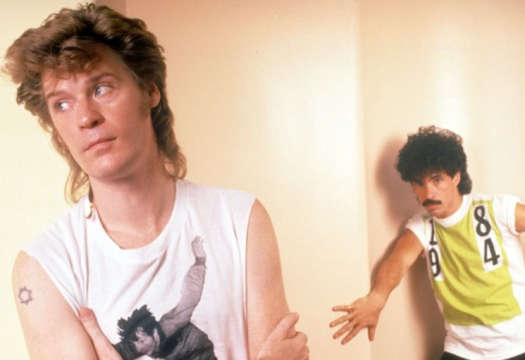In the commentary track with visual artist auteur Peter Greenaway included with the Film Movement Blu-ray release of The Pillow Book, the director discusses the nature of the medium of cinema. His basic point is that of critique, noting the cinematic tendency to adhere to a traditionalist textual narrative format. He acknowledges efforts by some predecessors to challenge the format, discussing some visual film history, albeit provincially, before delving into an involved, highly informative sidebar about the influence of visual artists and the limited international influence of England in this area.
In a roundabout way, he's describing his motivations for making The Pillow Book; the art of calligraphy and the narrative form of Sei Shōnagon's titular work represent a deviation from the novel format, representing a mode of expression otherwise unexplored within the lexicon of cinema.
Greenaway's style has always been at odds with contemporary form. He regularly details the contrarian disposition of his subjects — artists breaking experimental ground in the many different mediums that Greenaway is perpetually cataloguing and consolidating — and inserts their influence into his ever-changing, albeit distinctive, style. His works continually explore the many facets of artistic communication and expression while challenging the cinematic identity. Alongside his thematic preoccupation with extreme sex and death parallels, the relationship between architecture, objects and the human form and experimentation with composition and illumination, Greenaway is presenting an alternate vision of what cinema can be.
The Pillow Book, in turning its sights on Eastern influence, is one of the multifaceted auteur's more seemingly straightforward works. It starts in black and white with young Nagiko, which is believed to be Sei Shōnagon's actual name, developing an appreciation for the art of calligraphy. Her father, a writer, paints words on her face as a mode of affection and expression, giving her a framework with which to interpret physical validation. This is blended with her witness to a traumatic sexual realization, wherein she sees her father exchanging sexual favours as barter with his publisher for printing his work.
Greenaway blends this autochromatic flashback aesthetic with a handheld nouveau-pop present, using layering as a visual strategy to contextualize the action. This includes on-screen calligraphy inserts floating over the action, as well as shifting temporal references to Shōnagon's work, which was similarly a non-conformist amalgam of tactile and emotional experiences categorized experientially.
Nagiko's efforts to get close to her father's publisher and her eventual relationship with Jerome (Ewan McGregor), a waif of a man similarly exchanging sexual favours with the publisher for fiscal benefit, suggests fetishism. Obviously, the underlying motivator is that of vengeance, which is, again, part of the common conspiratorial thread of Greenaway's works, but Nagiko's linking of sexuality to bodily calligraphy — something she experienced innocently with her father — and a man in a similar situation to her father denotes a linking of romantic impulse and parental influence.
Her eventual mode of expression, writing a catalogue of books on the nude bodies of different men that indirectly represent the text that turns their flesh into art, is the ultimate union between her bodily and ritualistic desires. In this, the style of the movie ultimately represents the content, blending the many planes of influence onto one in order to make a cohesive statement about the text, the form and our relationship with it.
As an experiment, The Pillow Book is ripe for interpretation and discussion. The dialogue about the art of calligraphy alone, which notes that the act of writing is as much about the visual presentation as it is the actual words, is presented in an intricately analytical manner. But once the style is interpreted and the machinations for vengeful climax progress — Nagiko using her art as an occasionally mortal sword with which to attack her publisher target — there's a Freudian simplicity to it all. Underneath the stylistic pretence is a story about a girl confronting her own sexual deviance as it relates to the emasculation of her father.
The familiarity of this narrative trope holds some rudimentary Western influence, which is where the convergence of Greenaway's thesis narrative detraction ultimately collides with the inescapable conformity of the traditional story. There's a basic reliance on that which the persnickety director criticizes that makes The Pillow Book verge, ever so slightly, on hypocrisy, which is perhaps why his subsequent films have reverted to the more singular amalgamation of visual art and staging with cinema that Greenaway excels at.
Still, this strange little hybrid of style and artistic ideology holds an abundance of creativity and ideas vital to the perpetual discourse on the subject of cinema, which is, in itself, no small feat.
(Film Movement)In a roundabout way, he's describing his motivations for making The Pillow Book; the art of calligraphy and the narrative form of Sei Shōnagon's titular work represent a deviation from the novel format, representing a mode of expression otherwise unexplored within the lexicon of cinema.
Greenaway's style has always been at odds with contemporary form. He regularly details the contrarian disposition of his subjects — artists breaking experimental ground in the many different mediums that Greenaway is perpetually cataloguing and consolidating — and inserts their influence into his ever-changing, albeit distinctive, style. His works continually explore the many facets of artistic communication and expression while challenging the cinematic identity. Alongside his thematic preoccupation with extreme sex and death parallels, the relationship between architecture, objects and the human form and experimentation with composition and illumination, Greenaway is presenting an alternate vision of what cinema can be.
The Pillow Book, in turning its sights on Eastern influence, is one of the multifaceted auteur's more seemingly straightforward works. It starts in black and white with young Nagiko, which is believed to be Sei Shōnagon's actual name, developing an appreciation for the art of calligraphy. Her father, a writer, paints words on her face as a mode of affection and expression, giving her a framework with which to interpret physical validation. This is blended with her witness to a traumatic sexual realization, wherein she sees her father exchanging sexual favours as barter with his publisher for printing his work.
Greenaway blends this autochromatic flashback aesthetic with a handheld nouveau-pop present, using layering as a visual strategy to contextualize the action. This includes on-screen calligraphy inserts floating over the action, as well as shifting temporal references to Shōnagon's work, which was similarly a non-conformist amalgam of tactile and emotional experiences categorized experientially.
Nagiko's efforts to get close to her father's publisher and her eventual relationship with Jerome (Ewan McGregor), a waif of a man similarly exchanging sexual favours with the publisher for fiscal benefit, suggests fetishism. Obviously, the underlying motivator is that of vengeance, which is, again, part of the common conspiratorial thread of Greenaway's works, but Nagiko's linking of sexuality to bodily calligraphy — something she experienced innocently with her father — and a man in a similar situation to her father denotes a linking of romantic impulse and parental influence.
Her eventual mode of expression, writing a catalogue of books on the nude bodies of different men that indirectly represent the text that turns their flesh into art, is the ultimate union between her bodily and ritualistic desires. In this, the style of the movie ultimately represents the content, blending the many planes of influence onto one in order to make a cohesive statement about the text, the form and our relationship with it.
As an experiment, The Pillow Book is ripe for interpretation and discussion. The dialogue about the art of calligraphy alone, which notes that the act of writing is as much about the visual presentation as it is the actual words, is presented in an intricately analytical manner. But once the style is interpreted and the machinations for vengeful climax progress — Nagiko using her art as an occasionally mortal sword with which to attack her publisher target — there's a Freudian simplicity to it all. Underneath the stylistic pretence is a story about a girl confronting her own sexual deviance as it relates to the emasculation of her father.
The familiarity of this narrative trope holds some rudimentary Western influence, which is where the convergence of Greenaway's thesis narrative detraction ultimately collides with the inescapable conformity of the traditional story. There's a basic reliance on that which the persnickety director criticizes that makes The Pillow Book verge, ever so slightly, on hypocrisy, which is perhaps why his subsequent films have reverted to the more singular amalgamation of visual art and staging with cinema that Greenaway excels at.
Still, this strange little hybrid of style and artistic ideology holds an abundance of creativity and ideas vital to the perpetual discourse on the subject of cinema, which is, in itself, no small feat.




